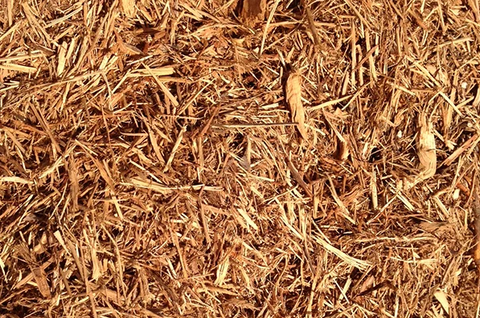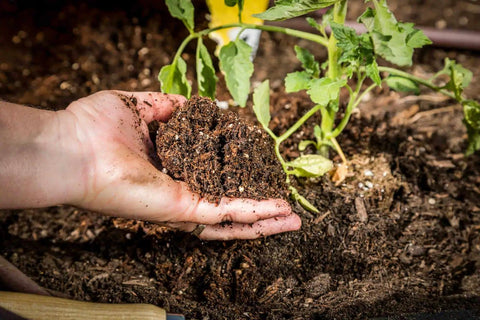Gardening isn't just about planting seeds and watering them; it's about creating the ideal environment for your plants to thrive. One of the most effective and scientifically-backed practices to achieve this is mulching. Mulching involves covering the soil around your plants with various materials, and it offers a multitude of benefits, from conserving moisture to reducing weed growth and enhancing soil health. In this comprehensive guide, we'll explore the science behind mulching, its numerous advantages, and the techniques for effectively mulching your garden to foster healthy and vibrant plants. The following content also has some reference value for raised garden beds.

Understanding the Science Behind Mulching
Before we delve into the practical aspects of mulching, let's explore the science that makes it such a valuable gardening practice:
1. Soil Temperature Regulation
Mulch acts as an insulating layer over the soil. It helps regulate soil temperature by reducing the impact of temperature fluctuations. During hot summer months, mulch keeps the soil cooler by providing shade and preventing excessive evaporation. In winter, it acts as a barrier, retaining heat and protecting the soil from freezing temperatures.
2. Moisture Conservation
Mulch serves as a moisture reservoir for your plants. It reduces water evaporation from the soil surface, ensuring that the roots of your plants stay consistently moist. This is particularly beneficial during dry spells when water conservation is crucial for plant health.
3. Weed Suppression
Weeds can compete with your plants for water, nutrients, and sunlight. Mulching creates a physical barrier that inhibits weed growth by blocking light and preventing weed seeds from making contact with the soil. This reduces the need for manual weeding and minimizes the risk of weed-related problems.
4. Soil Erosion Prevention
Mulch protects the soil from erosion caused by heavy rainfall or strong winds. It forms a protective layer that prevents the topsoil from being washed away, preserving the essential nutrients and microorganisms in the soil.
5. Improved Soil Structure
Over time, organic mulch materials like compost, wood chips, or leaves break down and decompose. As they do, they add valuable organic matter to the soil. This enriches the soil, enhances its structure, and promotes the growth of beneficial microorganisms.
6. Pest and Disease Control
Certain types of mulch, such as cedar or cypress, contain natural oils or compounds that can act as insect repellents. These mulches can help deter some pests from your garden. Additionally, by keeping the soil surface dry, mulch can reduce the spread of soil-borne diseases.

The Benefits of Mulching for Healthy Plants
Now that we've explored the science behind mulching, let's delve into the specific benefits it offers to promote healthy plants:
1. Consistent Soil Moisture
Mulch reduces water evaporation from the soil, ensuring that the moisture level remains steady. This is especially beneficial for plants with shallow roots that are susceptible to drying out quickly.
2. Enhanced Soil Fertility
As organic mulch materials break down, they release nutrients into the soil. This natural fertilization process enriches the soil and provides essential nutrients to your plants.
3. Weed Control
A layer of mulch prevents weeds from sprouting and competing with your plants for nutrients and water. This means less time spent on weeding and a cleaner, more manicured garden.
4. Temperature Regulation
Mulch insulates the soil, protecting it from extreme temperature fluctuations. This creates a stable environment that's conducive to healthy root development.
5. Reduced Soil Erosion
By acting as a protective barrier, mulch prevents soil erosion, preserving the integrity of your garden beds and retaining valuable topsoil.
6. Pest and Disease Management
Certain types of mulch can naturally deter pests, reducing the risk of infestations. Additionally, mulch helps prevent soil-borne diseases from splashing onto plant leaves during heavy rain.
Practical Techniques for Effective Mulching
Now that you understand the benefits, let's explore the practical techniques for effectively mulching your garden:
1. Choose the Right Mulch Material
There are various mulch materials to choose from, each with its own characteristics and benefits:
- Organic Mulch: Compost, straw, wood chips, and shredded leaves are excellent organic mulch options. Over time, they decompose, adding organic matter and nutrients to the soil.
- Inorganic Mulch: Materials like gravel, stones, or landscape fabric can be used for a low-maintenance mulching option. However, they don't provide the same soil improvement benefits as organic mulch.
- Living Mulch: Ground covers like clover or certain low-growing plants can act as living mulch, providing all the benefits of traditional mulch while also adding aesthetic appeal.

2. Apply the Right Depth
The depth of your mulch layer depends on the material you're using. In general, aim for a mulch depth of 2 to 4 inches. Thicker mulch layers can lead to excessive moisture retention and may suffocate plant roots.
3. Maintain a Mulch-Free Zone Around Plants
Keep a small, mulch-free zone around the base of your plants to prevent moisture-related issues, such as rot or stem diseases. This also prevents mulch from piling up against plant stems, which can attract pests.
4. Replenish Mulch as Needed
Over time, organic mulch materials will break down and thin out. Replenish your mulch layer as needed, typically once a year, to maintain its effectiveness.
5. Use Mulch in Garden Paths
Mulching garden paths not only reduces weeds but also creates an attractive and walkable surface. Materials like wood chips or gravel work well for this purpose.
6. Avoid Volcano Mulching
Volcano mulching is the practice of piling mulch high against the base of a plant, resembling a volcano. This can lead to moisture issues and harm the plant. Instead, apply mulch evenly, keeping it away from the plant's stem.
Conclusion: The Art and Science of Mulching
Mulching is a powerful and scientifically proven technique for promoting healthy plants and a thriving garden. By understanding the science behind mulching and implementing effective mulching practices, you can create an environment where your plants can flourish. From conserving moisture to improving soil structure and controlling weeds, mulching is a multi-faceted tool in your gardening arsenal. So, embrace the art and science of mulching, and watch your garden bloom with health and vitality.









